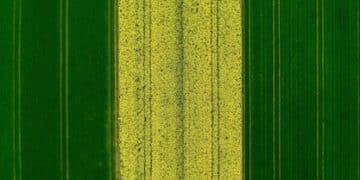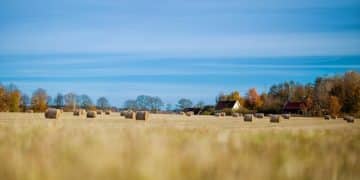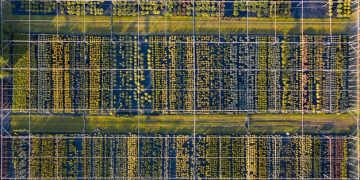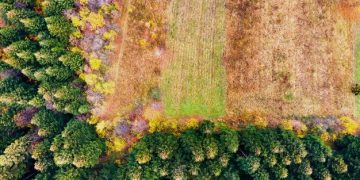Variable Rate Seeding 2025: Your Step-by-Step Guide to Higher Yields
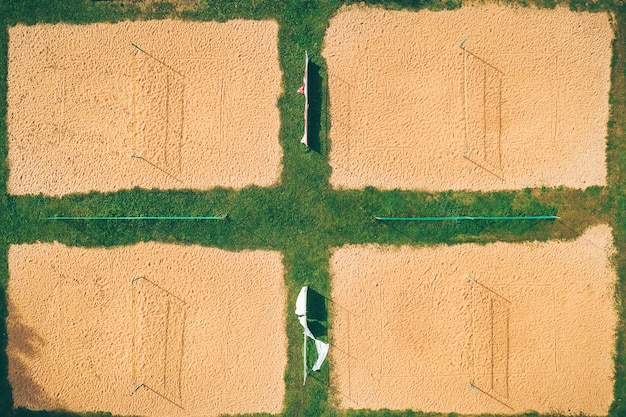
Variable rate seeding (VRS) is a precision agriculture technique that adjusts the number of seeds planted per unit area based on soil conditions, historical data, and yield potential, aiming to optimize resource use and maximize crop yields in 2025.
Ready to boost your farm’s efficiency and yields in 2025? Variable rate seeding: a step-by-step guide to maximizing yield potential in 2025 offers a data-driven approach to planting, ensuring you’re placing the right amount of seeds in the right places for optimal growth.
Understanding Variable Rate Seeding: What is it and Why Now?
Variable rate seeding (VRS) is no longer a futuristic concept; it’s a current practice transforming modern agriculture. It’s a precision agriculture technique that involves adjusting the seeding rate across a field based on soil characteristics, nutrient levels, and other factors that influence yield potential.
The Core Principle: Precision Placement
At its heart, VRS acknowledges that not all parts of a field are created equal. Some areas may have richer soil or better drainage, while others may be more prone to drought or nutrient deficiencies. By tailoring the seeding rate to these varying conditions, farmers can optimize plant density and resource allocation.
The Growing Adoption of VRS
Why is VRS gaining traction now? Several factors are driving its increased adoption:
- Technological Advancements: GPS technology, sensors, and data analytics have made it easier than ever to collect and analyze field data, enabling precise seeding adjustments.
- Economic Pressures: With rising input costs and fluctuating commodity prices, farmers are looking for ways to maximize efficiency and reduce waste.
- Sustainability Concerns: VRS can help reduce the environmental impact of farming by optimizing fertilizer use and minimizing soil erosion.
By understanding the principles and drivers behind VRS, and seeing how it addresses critical challenges that farmers face, we can begin appreciating the true value of this method in contemporary agriculture. The next sections will offer insight of the actual measures to be taken in its effective implementation.
Step 1: Assessing Your Field and Defining Management Zones
Before diving into the technology, the first step in implementing variable rate seeding is understanding your field. This involves gathering data and defining management zones, which are areas within the field with similar characteristics and yield potential.
Data Collection Methods
There are several methods for collecting the data you’ll need to define your management zones:
- Soil Testing: Collect soil samples from different areas of the field and analyze them for nutrient levels, pH, organic matter content, and other factors.
- Yield Mapping: If you’ve used yield monitors in the past, you can use this data to identify areas of consistently high or low yield.
- Remote Sensing: Satellite imagery and drone imagery can provide valuable information about plant health, soil moisture, and other factors that can influence yield.

Creating Management Zones
Once you’ve collected your data, you can use GIS software or other tools to create management zones. These zones should be based on a combination of factors, including soil type, nutrient levels, yield history, and topography. The goal is to create zones that are relatively uniform in terms of yield potential.
Remember that accurate field assessment and the definition of precise management zones are vital if one seeks the most effective and practical uses of variable rate seeding. This will allow later steps to be optimized based on specifics related to field conditions.
Step 2: Selecting the Right Seeding Rate for Each Zone
With your management zones defined, the next step is to determine the optimal seeding rate for each zone. This is where your understanding of crop physiology and local growing conditions comes into play.
Factors to Consider
Several factors influence the optimal seeding rate for a given zone:
- Soil Type: Sandy soils typically require higher seeding rates to compensate for lower water and nutrient retention.
- Nutrient Levels: Zones with low nutrient levels may benefit from higher seeding rates to maximize nutrient uptake.
- Moisture Availability: In areas with limited rainfall or irrigation, lower seeding rates may be necessary to reduce competition for water.
- Hybrid/Variety Selection: The optimal seeding rate may vary depending on the specific crop hybrid or variety you’re planting.
Using Historical Data and Research
In addition to considering these factors, it’s also helpful to consult historical data from your farm and research from local agricultural extension services. This information can provide valuable insights into the optimal seeding rates for your specific crops and growing conditions.
Step 3: Implementing Variable Rate Seeding Technology
Now that you’ve defined your management zones and determined the optimal seeding rate for each zone, it’s time to put the technology to work. This involves using specialized equipment and software to control the seeding rate as you move across the field.
Equipment Options
There are several different types of variable rate seeding equipment available:
- Variable Rate Planters: These planters use GPS technology and electronic controls to adjust the seeding rate on the go.
- Retrofit Kits: If you already have a planter, you may be able to retrofit it with a variable rate seeding system.
Software and Data Management
In addition to the equipment, you’ll also need software to manage your data and create prescription maps. These maps tell the planter what seeding rate to use in each zone. Make sure the software you choose is compatible with your equipment and easy to use.
Step 4: Monitoring Crop Growth and Adjusting as Needed
Variable rate seeding is not a “set it and forget it” approach. It’s important to monitor crop growth throughout the season and make adjustments as needed. This involves scouting your fields regularly and using remote sensing data to assess plant health and identify any problems.
Scouting and Observation
Regular field scouting allows you to visually assess plant health, identify pest or disease problems, and evaluate the effectiveness of your seeding rates. Take note of any areas where plants are struggling or thriving.
Remote Sensing for Monitoring
Remote sensing technologies, such as drone imagery and satellite imagery, offer a broader perspective on crop health. These tools can help you identify areas of stress or nutrient deficiency that may not be visible from the ground.

Step 5: Analyzing Results and Refining Your Strategy
At the end of the season, it’s important to analyze your results and refine your variable rate seeding strategy for the following year. This involves comparing yields across different management zones and identifying any areas where you can improve your seeding rates or management practices.
Yield Data Analysis
Collect and analyze yield data from your combine or yield monitor. Compare the yields from different management zones to assess the effectiveness of your variable rate seeding strategy. Look for patterns and correlations between seeding rates and yield outcomes.
Continuous Improvement
Variable rate seeding is an iterative process. Each year, you’ll learn more about your fields and how different seeding rates affect crop performance. Use this knowledge to refine your strategy and improve your results in the years ahead.
Step 6: The Role of Technology and Data Analytics in 2025
Looking ahead to 2025, technology and data analytics will play an even greater role in variable rate seeding. The integration of advanced sensors, AI-powered analytics, and real-time data will enable farmers to make more informed decisions and optimize their seeding strategies with greater precision.
Advanced Sensors and Data Collection
Expect to see the emergence of more sophisticated sensors that can measure a wider range of soil and plant characteristics in real-time. These sensors will provide a more comprehensive understanding of field conditions, allowing for more precise seeding adjustments.
AI-Powered Analytics
Artificial intelligence (AI) and machine learning algorithms will analyze vast amounts of data from multiple sources to identify patterns and predict optimal seeding rates. These tools will help farmers make data-driven decisions and fine-tune their strategies for maximum yield potential.
| Key Element | Brief Description |
|---|---|
| 🌱 Management Zones | Areas with similar soil and yield potential. |
| 📊 Data Analysis | Using soil tests and yield maps to determine seeding rates. |
| 🚜 VRS Equipment | Specialized planters to adjust seeding on the go. |
| 🛰️ Monitoring | Tracking crop growth with scouting and remote sensing. |
Frequently Asked Questions About Variable Rate Seeding
▼
Variable rate seeding (VRS) is a practice that adjusts the quantity of seeds sown depending on field properties like soil type and water levels. This optimizes resource consumption and boosts crop output for your farm.
▼
VRS optimizes seed density by tailoring it to the specific qualities of each site, resulting in better resource allocation and plant development. It maximizes yield by improving how seeds interact with environmental elements.
▼
Absolutely! By optimizing resource usage and minimizing seed waste, VRS can contribute to more sustainable farming practices, minimizing the environmental impact of agricultural operations.
▼
VRS may require dedicated variable rate planters or retrofitting existing planters. Essential tools also include GPS, field mapping software and data collection equipment.
▼
It is best to adjust your VRS strategy annually through regularly monitoring crop growth and yields. Analyzing harvested data enables progressive refinements adapted to seasonal variables and field conditions.
Conclusion
Variable rate seeding: a step-by-step guide to maximizing yield potential in 2025 offers a promising pathway toward more efficient and sustainable agriculture. By embracing technology, data analytics, and a commitment to continuous improvement, farmers can unlock the full potential of their fields and achieve higher yields while minimizing their environmental impact.
